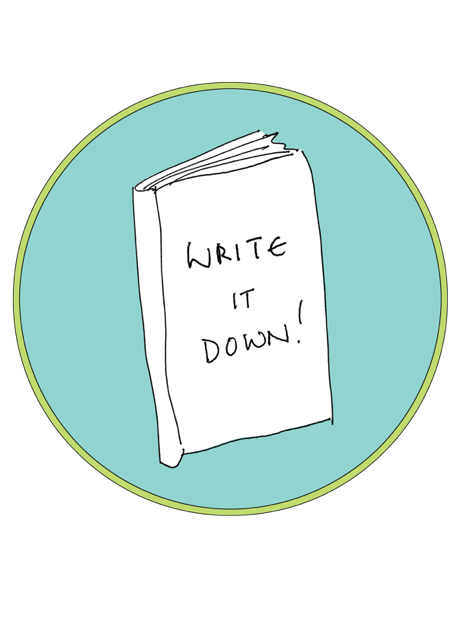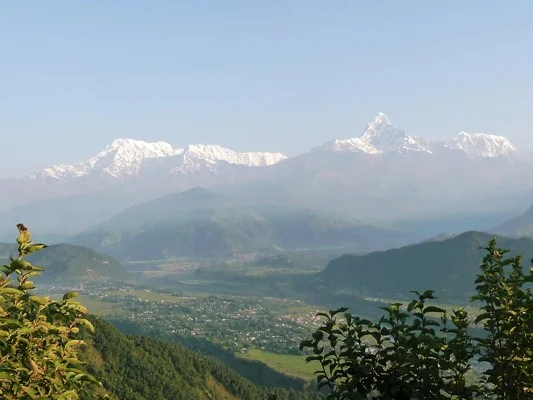It was a book by Jack Kornfield, The Art of Forgiveness, Lovingkindness and Peace, that I discovered in a charity shop in Brighton, that first got me into meditation. I was damn angry after the death of Jerry, my husband, and had precious little forgiveness and lovingkindness for anyone, let alone for myself. It’s still the book I would grab if my house was on fire. The Buddhist meditations, especially on forgiveness, were achingly appropriate and very easy to understand. It has become my backbone and I’ve found peace in it’s pages when the chips have been down.
Monks in at the monastery in Nepal
When friends invited me to accompany them on a visit to a Buddhist monastery in Nepal, I jumped at the chance and packed thermals and sheepskin slippers. I imagined somewhere dank and dark, half way up a mountain with stone-built dormitories and shared facilities. But oh no, this nirvana was in central Kathmandu, a newly built guest house in the grounds of the Porong Monastery, with private en-suites, white duvets and the best vegetarian food I ever tasted. There was teaching every evening by Lama Pema Dorjee on Buddhist principles and meditation, with lots of laughter and giggling. The monks belief in kindness, gentleness, generosity and acceptance of differing lifestyles and faiths to achieve progress in this mad world of anger and hate overwhelmed me. I wept buckets. Their belief in reaching out to the greater community, universal acceptance, sense of fun and celebration of being alive has stayed with me every single day since then. Returning to London I studied how mindfulness and meditation could be employed in teaching, how the ability to ‘live in the now’ can calm us all and help us cope better with our hectic, and often, unfathomable lives. As novelist Annie Dillard says, ‘How we spend our days is, of course, how we spend our lives.’
TRY MINDFULNESS MEDITATION NOW!
Stop what you’re doing and what you’re planning to do next. Sit down and concentrate on your breathing, feeling your abdominal wall extend with each in-breath and contract on each out-breath. If your thoughts start to wander, don’t worry, that’s fine. That’s what thoughts do. Acknowledge them and say to yourself, ‘Thinking, thinking,’ or “worrying, worrying, ’ or ‘planning, planning.’ Then bring your concentration back to your breathing, congratulating yourself on returning. Do this for three or four minutes and smile, you have started your mindfulness meditation practice. Easy, eh?
The ability to stop analysing the mistakes of the past and to stop panicking about the hypothetical monsters in my future will take a lot practice but every practice adds an arrow to my bow. I learnt that mindfulness meditation is not about cutting out the realities of everyday existence but about accepting the blue bottles banging about in my brain and letting them be, without grabbing a fly-swatter! The flies are there; I can never catch them. But I can sit on the 149 bus, surrounded by shouty conversations on mobiles, hissing iPods and fighting small children and switch off. With feet flat on the floor, my spine like a stack of 50p pieces and, without closing my eyes and worrying about looking like a weirdo, I can concentrate on my breathing for five or six stops and let go. I use this practice when I get the 4am wide-awakes after too much wine. I use it when work plans go awry and my self-confidence collapses, or when a plane is delayed. Mindfulness meditation doesn’t mean darkened rooms, uncomfortable sitting positions, incense sticksor candles – it’s about learning to appreciate every single moment of your life. You can do it standing, sitting, walking or lying down. You can take five minutes or fifty minutes. It’s ‘stopping and smelling the roses’, even if you’re in a smog-ridden city. It’s smiling (and meaning it) even at those who can annoy you the most, or offering the stressed-out mum in the queue behind you in Morrisons, with a fighting toddler in tow, the place before you at the check-out. It is about looking at your unique daily experience and, however grim it may seem, finding one or two positives to concentrate on. Whether it’s your garden, your dog, your kids or that glass of white wine with series six of Game of Thrones. It is totally inclusive, without a hint of snobbery and cheers you up no end.
Prayer flags surround a temple in Nepal
Don’t be put off by every celeb from Goldie Hawn to Ruby Wax extolling the virtues, this particular form of awareness originated in the ancient traditions of Asia. The practices have been part of Buddhist culture for millennia and you don’t need to be a hippie to realise the benefits. You don’t need a hacienda in Mexico or an ashram in India to learn. You can buy a book and teach yourself, and practice it every day. It costs absolutely nothing and is even available on the NHS. Mindfulness based stress reduction is used by doctors dealing with pain and is a tool that is employed by sportspeople and actors, too. In fact, metta [loving-kindness] meditation aided Alice Walker through a tricky divorce and gave her the compassion necessary to write novels such as The Color Purple.
So this is why all of my workshops and retreats have mindfulness as a core principle. Whether we write, meditate, walk, practice yoga, swim, eat or share wine with friends we concentrate on acknowledging every day as a blessing. We learn to ‘live in the now.’ We cultivate a new awareness of the parts of our body and embrace the very opposite of multitasking. We rediscover the importance of doing one thing at a time. Concentrating on stillness and relaxation, we practise anchoring our minds – encouraging compassion and loving-kindness for ourselves and others and responding with kindness to our own faults, failures and hang-ups.
It’s easy, effective and scientifically proven, a great practise for getting your mind ready to write. ‘Creativity comes from resting the mind in neutral,’ says Jan Chozen Bays in ‘How to Train a Wild Elephant and Other Adventures in Mindfulness.’ It aids an attitude of mind that is engaged and present without floating or straying. As Jemima Kiss states, in an article for The Observer ‘How Life In The Fast Lane Has Made Us Lose Touch With Our Senses’, ‘Mindfulness is seen as an enquiry for objectivity, a way to claw back some of the equilibrium of how we exist in the real world, rather than the hyper-mediated place we create for parts of ourselves online.’
MINDFULNESS BOOK RECOMMENDATIONS
‘Mindfulness Pocketbook’ Gill Hasson
‘How To Train A Wild Elephant’ Jan Chozen Bays
’10 Mindful Minutes’ Goldie Hawn
‘The Art of Forgiveness, Lovingkindness and Peace’ Jack Kornfield
‘The Mindful Way Through Depression’ Mark Williams, John Teasdale, Zindel Segal and Jon Kabat-Zinn

